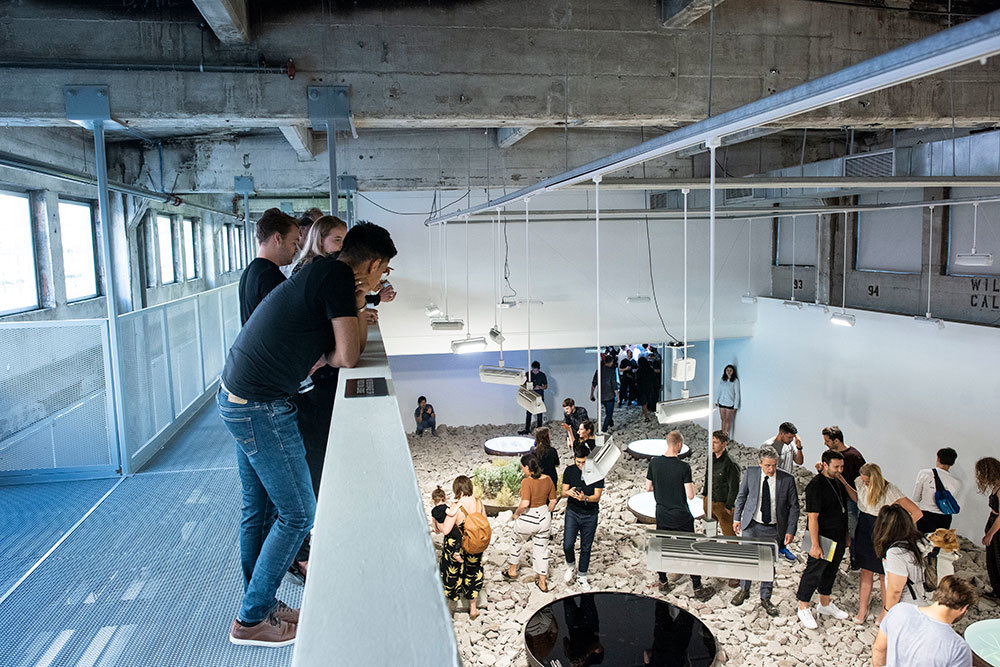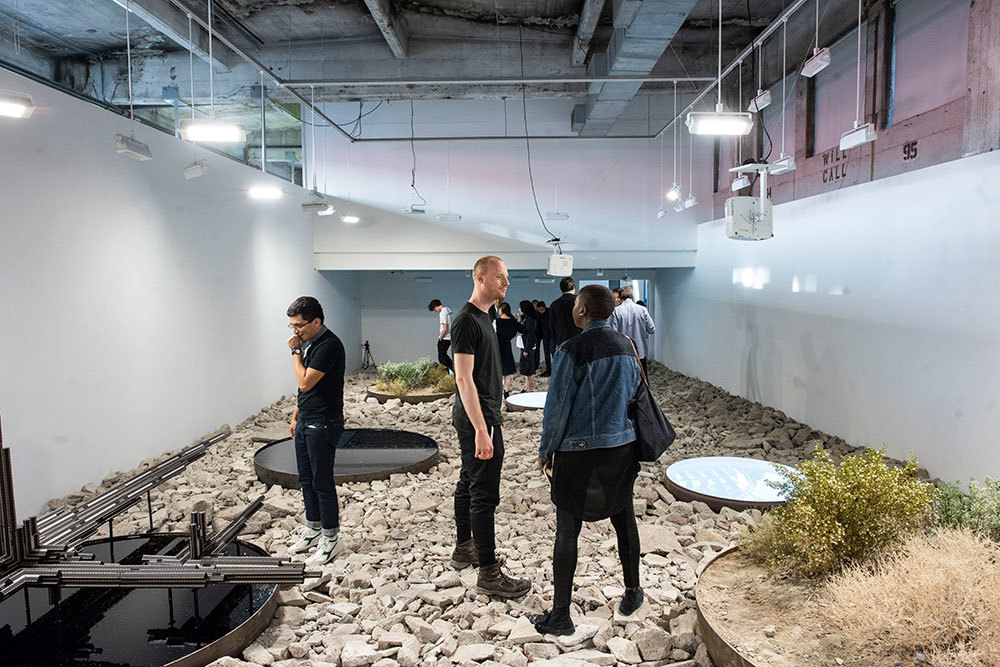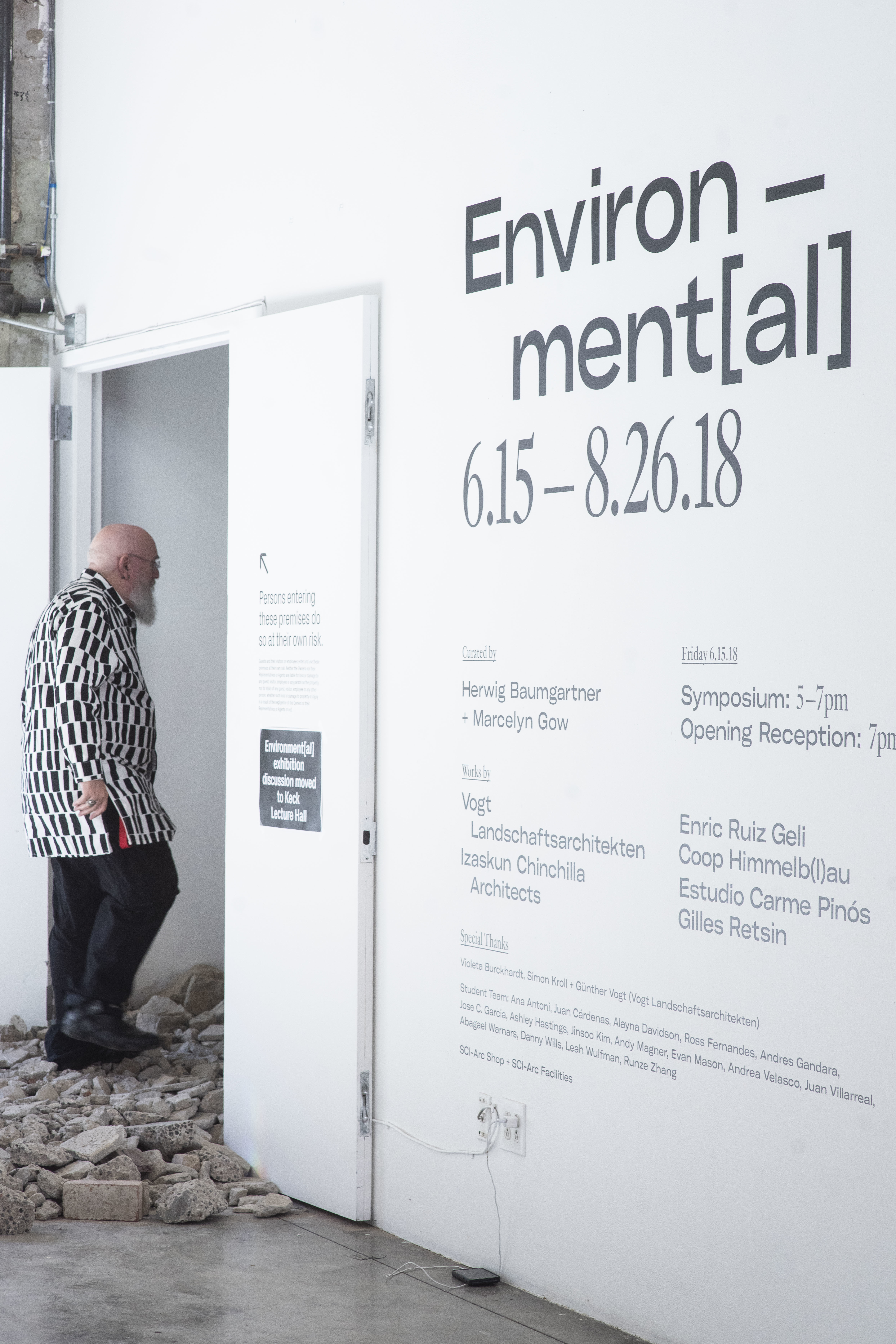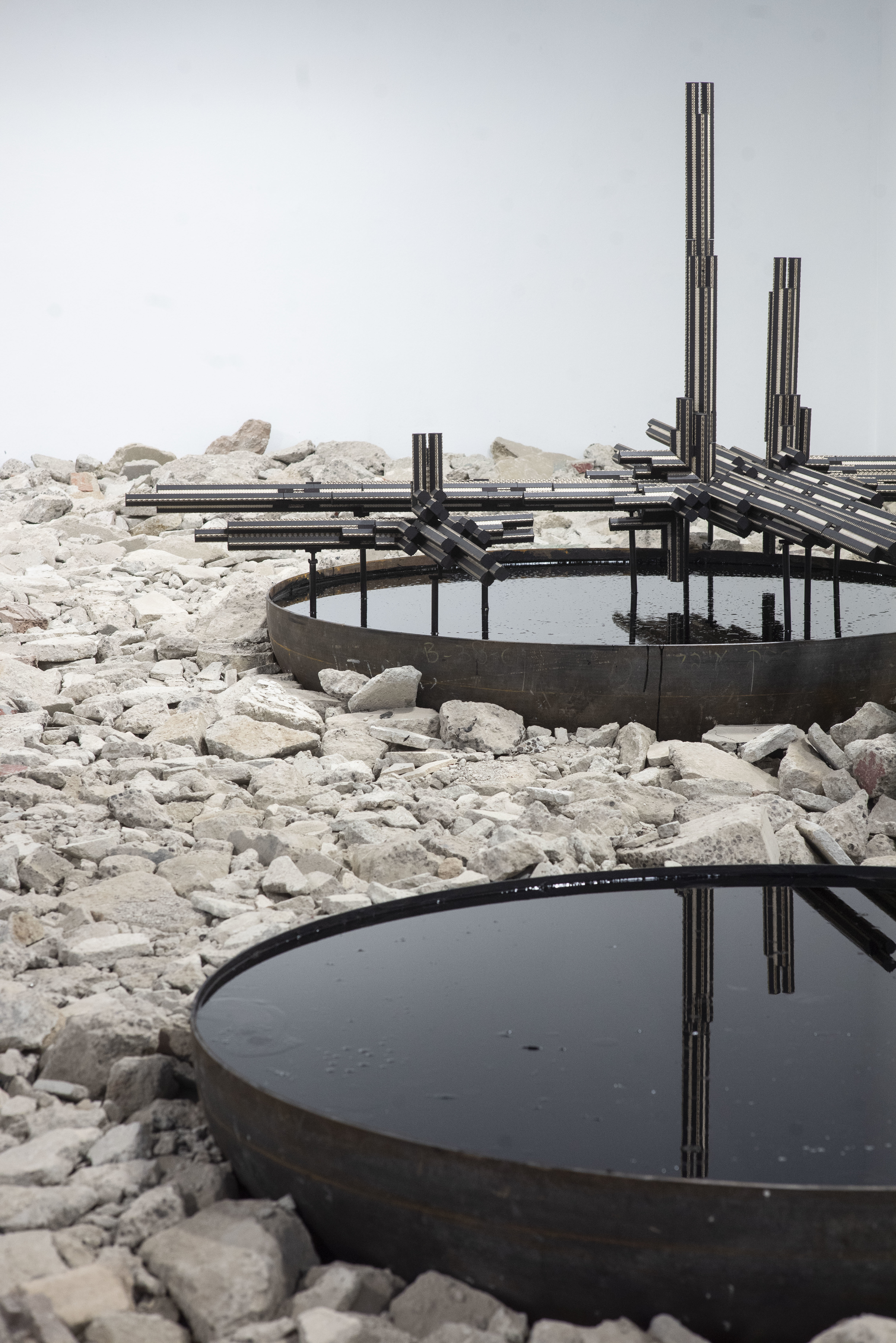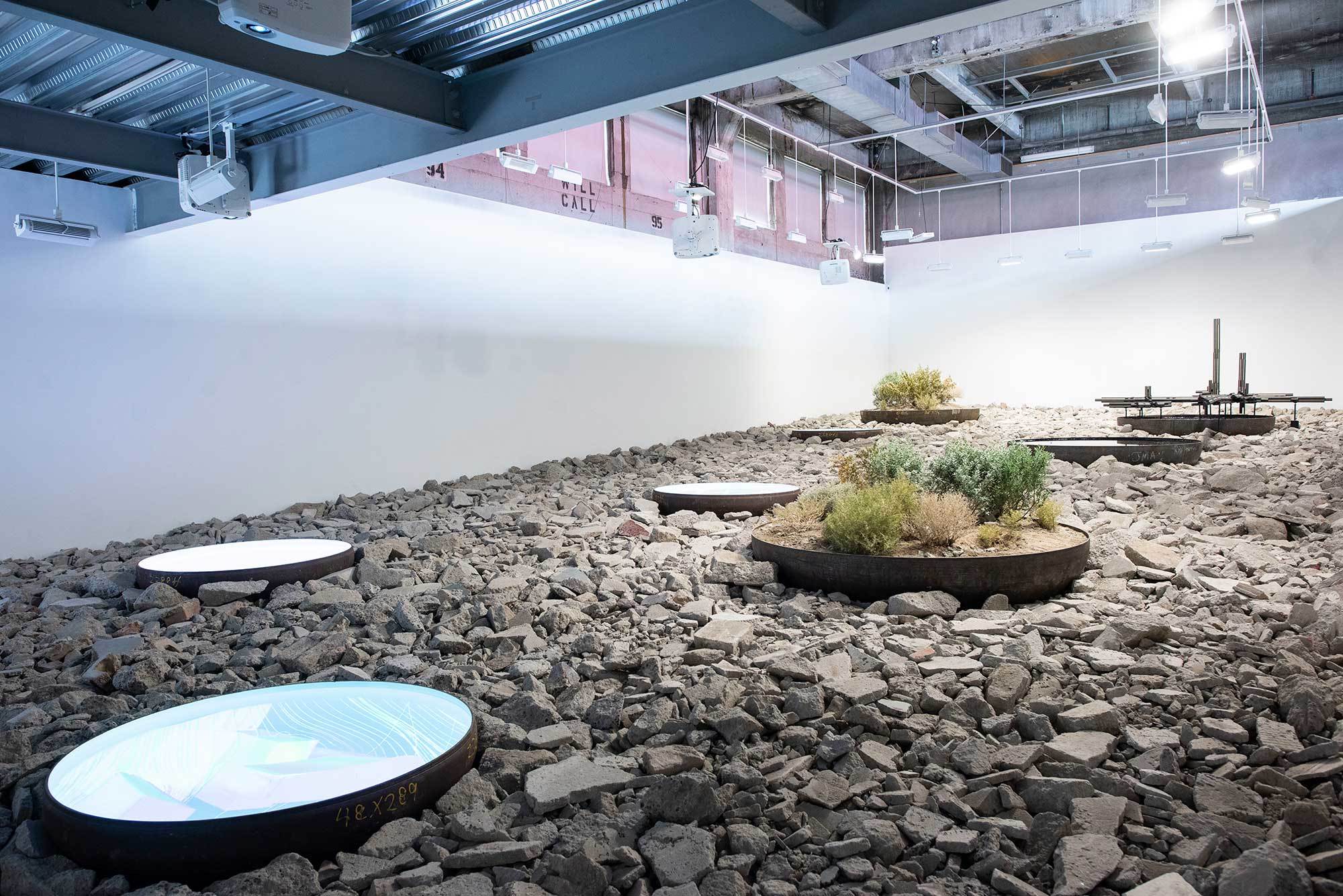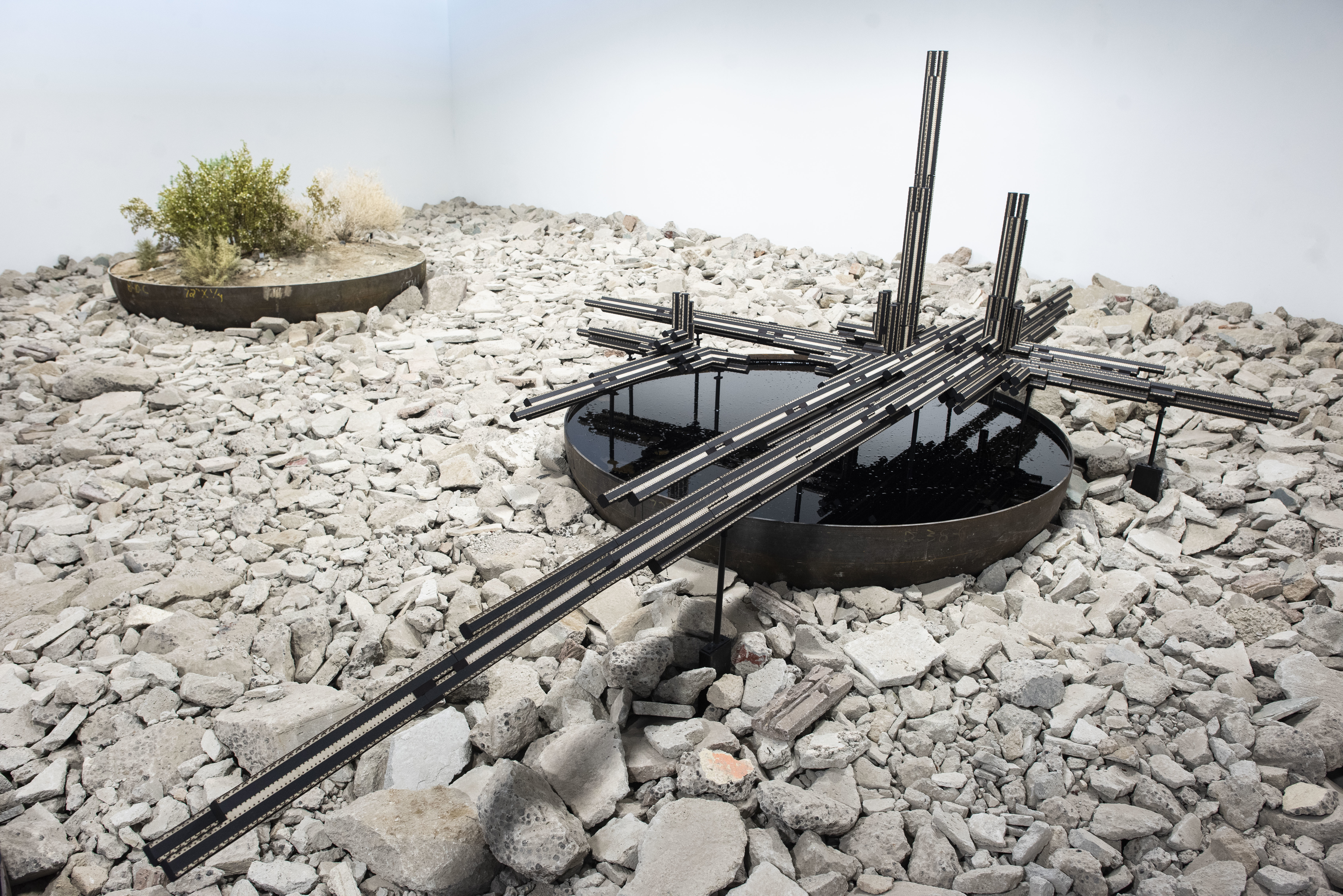SCI-Arc Exhibition “Environment[al]” Explores the Physical World in a Post-Digital Space
SCI-Arc’s current exhibition “Environment[al],” curated by faculty members Marcelyn Gow and Herwig Baumgartner and on view through August 26, warns visitors to proceed with caution. The precarious floor is a field of concrete rubble, conceived and installed by European firm Vogt Landscape Architects. As visitors tread the uneven ground from exhibit to exhibit, the sound of moving water evokes the feeling of walking alongside a stream. The works aren’t mounted on the wall but embedded into the rubble, installed inside rusty steel cisterns that may also contain the occasional pool of water or desert shrub. Vogt’s inspiration, according to the firm, was partly our current Anthropocene age, in which “forces of geological, biological and cultural change have been abstracted by our own relationship to the planet.”
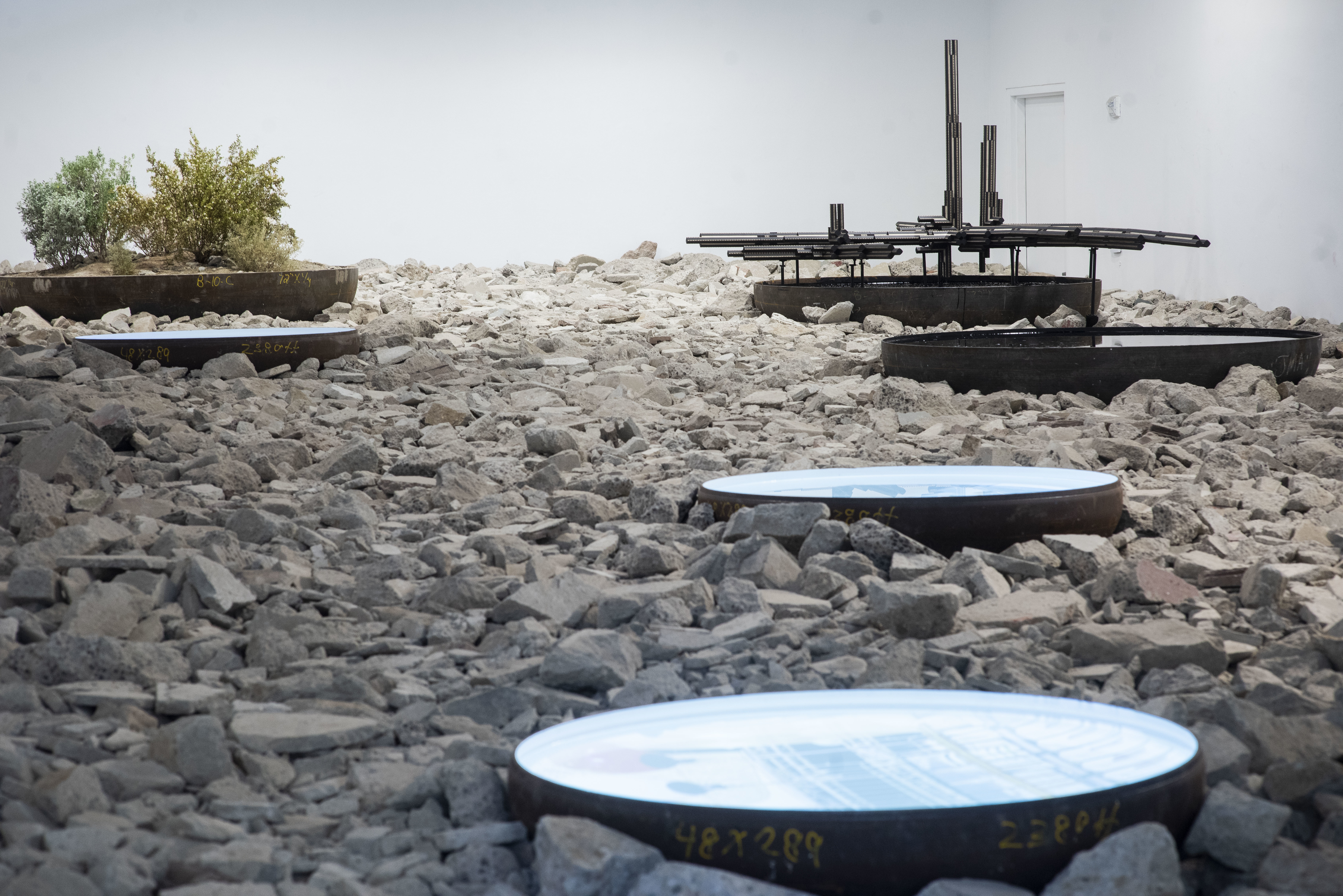
Gow and Baumgartner conceived of “Environment[al]” as an inquiry into contemporary attitudes towards the environment in the context of climate change, manmade interventions into nature, and our post-digital era. Gow defines the latter as “the mixing of physical spaces with digitally mediated space,” an idea manifested in the exhibition design itself: for the most part, the works are presented on digital screens rather than as physical models. One rubble-embedded screen features the plans for Coop Himmelb(l)au’s “Town Town” project, an unrealized proposal for the Erdberg Office Tower in Vienna from 2000/2010. In addition to the wind turbine installed at the top, the high-rise building would have produced a surplus of energy through its skin. The entire building envelope was designed with a photovoltaic lamination on its skin, comprising crystalline forms developed through digital simulations of dynamic wind forces on the site.
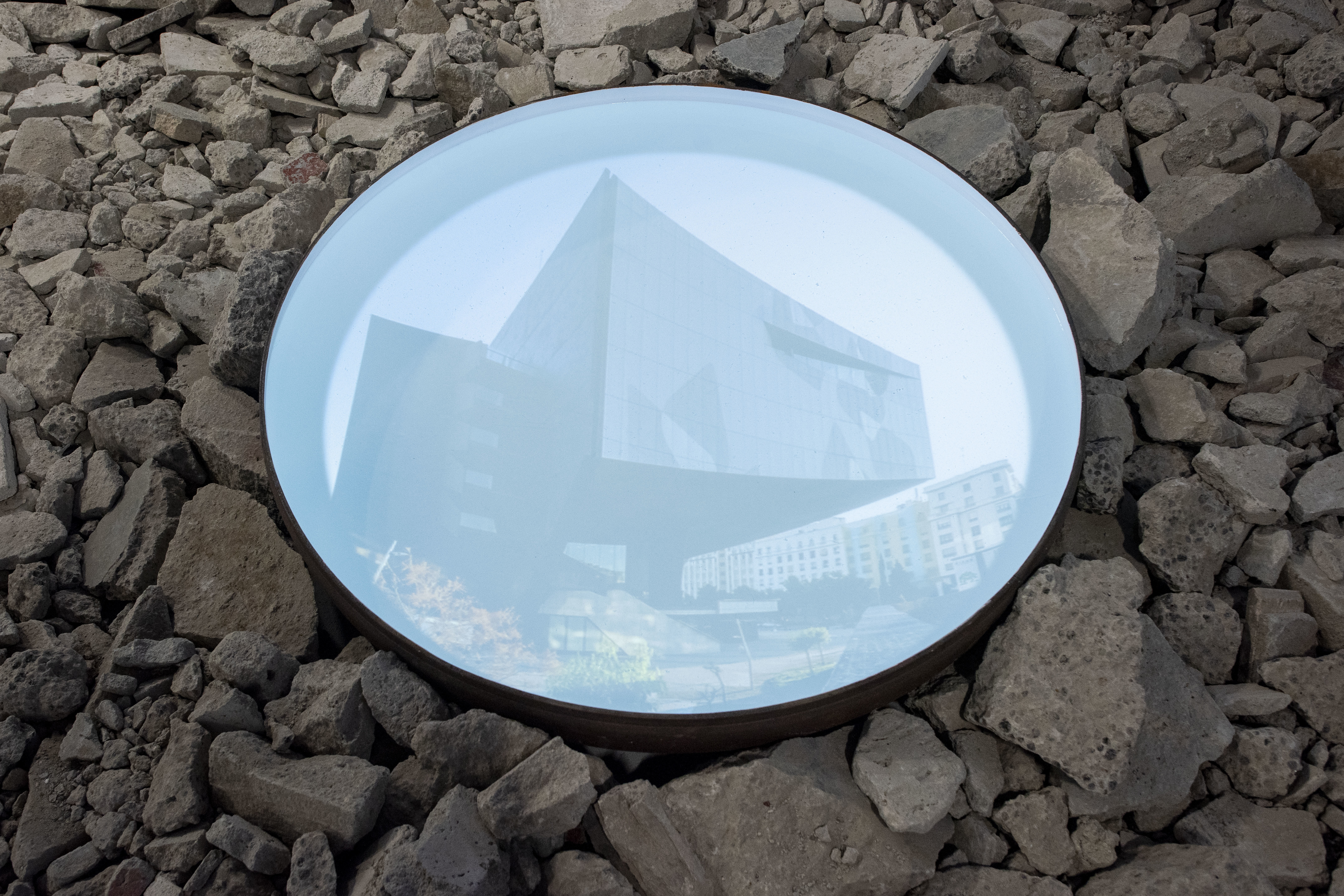
A recurring thread throughout the exhibition is how, with new technologies, architectures can provide a synthetic experience of nature. “Taking into account recent approaches to our understanding of environment and contemporary modes of ecological awareness,” the curators write, “the exhibition considers the possibility of environments where qualities are fused with objects not normally associated with them.” One example is a misty building envelope. Barcelona-based architect Enric Ruiz Geli's “It’s All About Particles” video features the Nitrogen Cloud that the firm designed for Barcelona’s Media ICT building. In response to external atmospheric conditions that are monitored by sensors, Nitrogen Cloud augments the building facade with a layer of artificial fog that insulates and shades the interior.
Madrid-based Izaskun Chinchilla Architects embrace this synthetic nature theme most fully with their video “Six Ways in Which We Can Build You a Space That Feels Like a Forest,” which describes a project in Belmonte, Spain as “architecture breathing like a forest.” In the summer, the glass chimneys they designed above the courtyard of Castillo de Garcimunoz Courtyard are heated by the sun, and as the warm air inside flows upwards, it pulls the air from below along with it, providing ventilation. (In the winter, a glass cover retains the courtyard’s warmth through the greenhouse effect.)
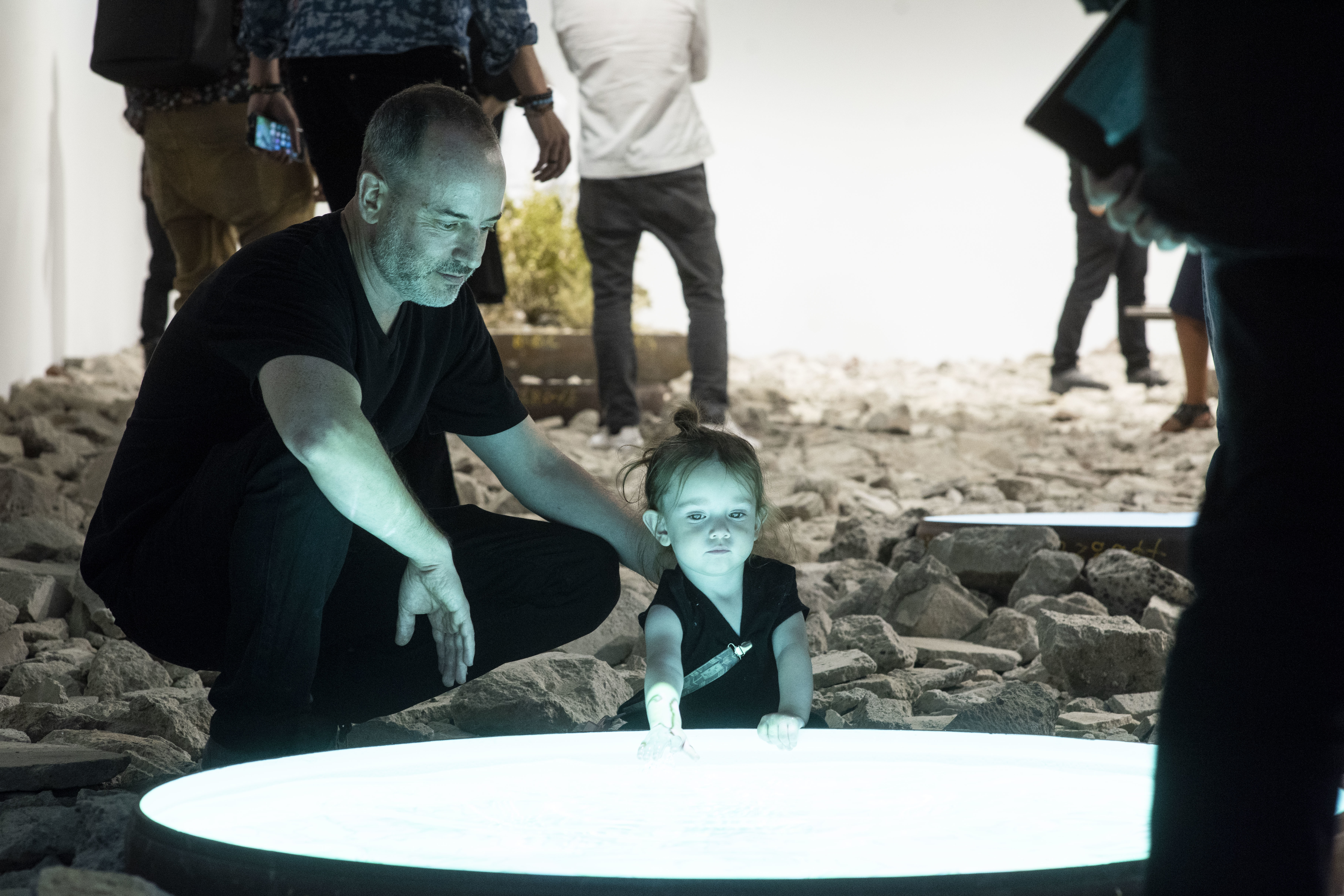
The entire exhibition, in fact, is sited inside a synthetic experience of nature, but Vogt’s intention was not to create a romantic nature walk. The installation is based on the ecology of Owens Valley, a now-arid expanse of land in Central California that Los Angeles has literally tapped dry: for more than a century, its waters have been funneled into our faucets. In the context of the nearby L.A. River, a stream lined by cement, and the recently demolished 6th Street Bridge, Vogt’s use of cement rubble is a reminder of the embattled relationship between human progress and the environment, especially when it comes to water, a precious and dwindling natural resource. It’s a reminder that if we continue along this path, we’ll be left with a future where synthetic experiences of the future are all that we have left.
